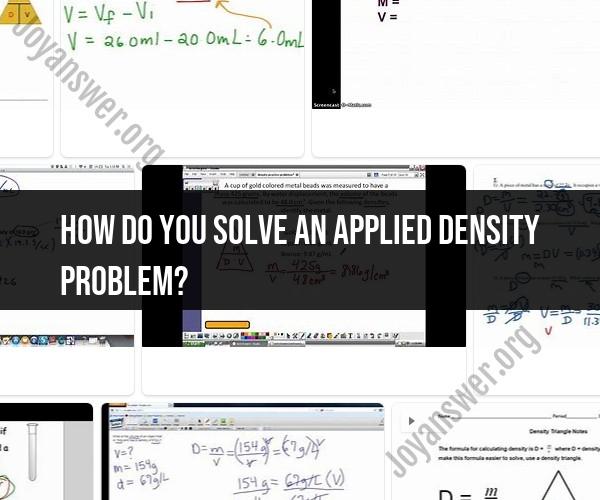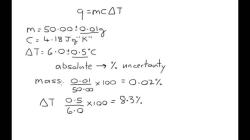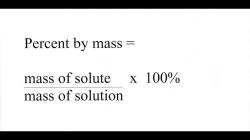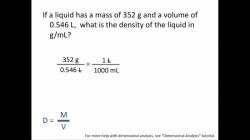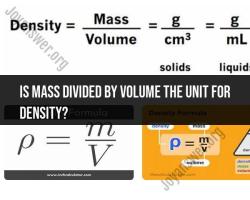How do you solve an applied density problem?
Applied density problems are common in physics, chemistry, and engineering, requiring a solid understanding of density concepts and problem-solving techniques. This article provides step-by-step solutions to various applied density problems, guiding you through the process of tackling these challenges.
Introduction to Applied Density Problems
Density is a fundamental physical property that measures mass per unit volume. Applied density problems involve scenarios where density calculations are used to solve real-world problems, such as determining the mass or volume of objects, understanding buoyancy, and more.
Step-by-Step Solutions to Applied Density Problems
1. Finding Mass from Density and Volume
Given the density (ρ) and volume (V) of a substance, you can find the mass (m) using the formula: m = ρ × V. Substitute the values and solve for mass.
2. Calculating Volume from Mass and Density
If you have the mass (m) and density (ρ) of an object, you can calculate its volume (V) using the formula: V = m / ρ. Plug in the values and solve for volume.
3. Buoyancy Problem Solution
When dealing with objects submerged in a fluid, use the principle of buoyancy. The buoyant force is equal to the weight of the displaced fluid. Calculate the volume of the displaced fluid using the object's dimensions and density, then find the weight of the fluid. This is equal to the buoyant force acting on the object.
4. Density Gradient Problem
In situations where density varies with depth, integrate the density function over the depth range to find the average density. Multiply the average density by the volume to find the total mass.
5. Composite Object Density
For composite objects made of different materials, calculate the individual masses of each component using their densities and volumes. Sum up the masses to get the total mass of the composite object.
Benefits of Mastering Applied Density Problems
Mastering applied density problems offers several advantages:
1. Real-World Application
Applied density problems mirror real-world scenarios, allowing you to apply theoretical knowledge to practical situations.
2. Problem-Solving Skills
Working through these problems enhances your problem-solving skills and critical thinking abilities.
3. Confidence Boost
Successfully solving applied density problems boosts your confidence in tackling similar challenges in various scientific and engineering disciplines.
Conclusion
Mastering applied density problems equips you with valuable problem-solving skills applicable across scientific and engineering fields. By understanding density concepts and working through step-by-step solutions, you can confidently address complex scenarios and enhance your ability to analyze and solve real-world density-related challenges.
